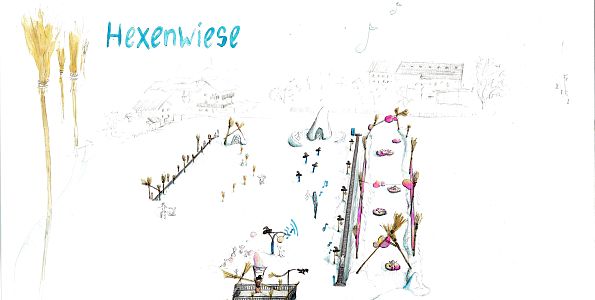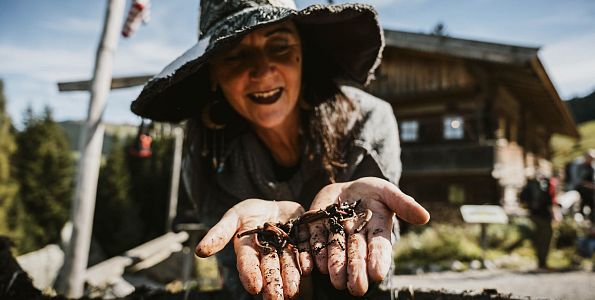Early season start
 26.11.2025
26.11.2025An unprecendented success story began 43 years ago, when in 1977 the cable cars of six villages between Brixental and the Wilder Kaiser linked up to form SkiWelt Wilder Kaiser - Brixental.
The SkiWelt was a project of the community. Founded by visionary and regional thinkers, it has continued to act as an engine for an entire region. Consequently, more than half a billion euros have been invested sustainably in the region since 1977 by the SkiWelt’s cable car companies alone and countless jobs have been created.
Behind the successful SkiWelt brand, however, the people and the teamwork among SkiWelt colleagues have always played an equal role. The personal commitment and foresight of many partners, collaboration with landowners, innkeepers, tourism experts and many dedicated people stood at the core. From the pioneers of the hard early years to the approximately 500 dedicated employees today, the SkiWelt is a collaborative project of success, firmly rooted in the region and an integral part of the entire region’s identity. The economic success of this cooperation is what ultimately counts as well of course. However, without the trusty community within the SkiWelt family, the personal contact with one another and putting the common interest above one’s own, the SkiWelt would certainly not be as successful today as it is.
Today, the SkiWelt is one of the largest and most modern ski resorts in the world; it is also one of the most successful ski destinations in the world. The merger of independent cable car companies was initially laughed at by others but it has long since been regarded as a role model for the very much on-trend ski resort alliances. Nonetheless, the beginnings were rather modest. The area around the Hohe Salve, the Zinsberg, Hartkaser and Astberg were somewhat unknown as winter sports regions at that time. It was the construction of the first lift in 1947 that heralded the Brixental valley’s entry into the world of skiing. Of course, it was a time when groundbreaking innovations were also required. Thus, in 1947, Europe’s longest chairlift, boasting a length of 2,830 metres, was built in Hopfgarten. Then in 1948, Austria’s largest ski lift was installed in Westendorf with 22,289 people having already been transported in 1948/49. Facilities in Söll, Scheffau, Brixen, Ellmau and Going, then later Itter, followed in the coming years and decades. Pioneering cable car projects were being implemented in the SkiWelt time and again: Europe’s longest funicular was constructed in Ellmau in 1770, for example, then Europe’s first 8-seater chairlift came to Söll in 1988 and the world’s first solar-powered lift was installed in Brixen im Thale in 2008.
The first collaborations emerged in the 1970s with the first joint ticket being introduced in 1973/74, before the amalgamation to form the giant ski area, known then as “Skigroßraum Wilder Kaiser – Brixental”, took place in 1977. For the first time, winter sports enthusiasts could now be offered the entire ski region with a single ticket – from a one-day ticket to a season pass. In one fell swoop the “SkiWelt” (which replaced the old name “Skigroßraum” in 1990) became the largest interconnected ski resort in Austria and one of the largest in the world.
Year after year, the facilities were expanded and modernised. New slopes and an ever-increasing range of ski runs created even more convenient connections between the individual SkiWelt resorts and new experiences were offered. Following a few mild winters with little snow, the first snowmaking systems were installed in the 1990s and were expanded over the years. Meanwhile, 16 snowmaking reservoirs were built, always with consideration to nature and ecology. And on the subject of ecology, 100% of the electricity used in the running of the ski resort and snowmaking systems is in fact green energy produced by the local hydropower company, Tiroler Wasserkraft. In autumn 2017, the SkiWelt Wilder Kaiser-Brixental became the first ski resort to win the ecological resort category at the “Telegraph World Snow Awards”, impressing a judging panel of renowned international journalists, who honoured the SkiWelt Wilder Kaiser- Brixental for their long-term efforts.
In recent years, investment in comfort has been high on the SkiWelt agenda: old starter lifts have been replaced by modern cable cars and most of the tow lifts by comfortable chairlifts. Parking garages, ski depots, investment in Wi-Fi and a variety of experiences followed, but so too more and more technical commitment to providing reliable snow and perfect slope conditions. Likewise, ecological criteria have been moving increasingly to the fore: SkiWelt has been operating exclusively with 100% green electricity for many years. Snowmaking is powered using only 100% green electricity and pure drinking water, which is returned to the natural cycle once the snow has melted. The GPS snow measurement system, which has been extensively used for many years, also facilitates snowmaking and slope preparation with significant conservation of resources (a saving of around 20%). For these and many other projects, since 2017 SkiWelt has been consistently recognised by various international media as the "ecological ski area of the year" and as the "most environmentally-friendly ski operation". All those involved at SkiWelt have, of course, been very pleased by these awards, which also provide an incentive to continue to pursue innovative developments.
One of the most modern ski regions in the world & top year-round destination
Did you know?
Investment volume: more than 590 MILLION EUROS (over the past 43 years)
Employees: in winter, approx. 500 / in summer, over 250 (predominantly local and permanent staff)
Ski days: 2.6 MILLION in winter (November - April)
In Summer: Austria's largest "mountain experience" (May - November)
| 7 mountain theme parks | 15 lifts | 1 ticket (1-14 days + seasion ticket)
 26.11.2025
26.11.2025 10.07.2025
10.07.2025 02.05.2025
02.05.2025Still no
press account?
If you have not used our press service yet, then please create your own personal account now. You will find that it's well worth it
Create new accountForgot password?